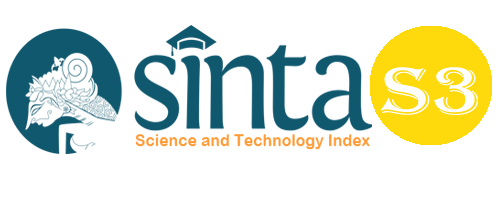The Influence of Flexible Working Space and Work-Life Balance on Employee Performance with Gender as Moderation
Abstract
This study aims to analyze the effect of FWS and WLB on the performance of the DGSAM employees moderated by gender. This research is explanatory quantitative research. The data analysis technique used Partial Least Square. The number of respondents amounted to 385 people who are official civil servants of DGSAM. The results of this study found: that (1) FWS has a positive significant effect on employee performance. WLB which has 4 dimensions produces findings: (2a) Work Interference with Personal Life (WIPL) has a positive significant effect on Employee Performance, (2b) Personal Life Interference with Work (PLIW) has a negative significant effect on Employee Performance. (2c) Personal Life Enhancement of Work (PLEW) has a positive significant effect on employee performance. (2d) Work Enhancement of Personal Live (WEPL) has a positive significant effect on Employee Performance. Gender, which is the moderating variable in the relationship between FWS and WLB on Employee Performance, results in the following findings: (3) Gender doesn't moderate the relationship between FWS and Employee Performance. (4) Gender partially moderates the relationship between WLB and Employee Performance. The magnitude of the effect of FWS and WLB on Employee Performance is indicated by R² of 37.6%.
Keywords
Full Text:
PDFReferences
Abdullah, M. (2014). Management and Employee Performance Evaluation (BR Hakim (ed.). Aswaja Pressindo.
Abid, S., & Barech, DK (2017). The Impact of Flexible Working Hours On The Employee's Performance. International Journal of Economics, Commerce and Management, 5 (7), 450–466. http://ijecm.co.uk/
Altindag, EA, & Siller, F. (2014). Effects of Flexible Working Method on Employee Performance: An Empirical Study in Turkey. Business and Economics Journal, 05 (03), 1–8. https://doi.org/10.4172/2151-6219.1000104
Anwar, J., Hansu, SAF and Janjua, SY (2013). Work-life balance: What organizations should do to create balance? World Applied Sciences Journal, Vol. 24 No. 10, pp. 1348-1354
Aslam, Muhammad. (2015). Influence of Work-Life Balance on Employees Performance: Moderated by Transactional Leadership. COMSAT Institute of Information Technology. Journal of Resources Development and Management ISSN 2422-8397 Vol.10, 2015
Carlson, DS, Grzywacz, JG, & Michele Kacmar, K. (2010). The relationship between schedule flexibility and outcomes via the work-family interface. Journal of Managerial Psychology, 25 (4), 330–355. https://doi.org/10.1108/02683941011035278
Chung, Heejung & Lippe, Tanja Van Der. (2018a). Flexible Working, Work-Life Balance, and Gender Equality. UK Economic and Social Future Research Leader. https://doi.org/10.1007/s11205-018-2025-x
Chung, Heejung (2018b). Gender, Flexibility Stigma and the Perceived Negative Consequences of Flexible Working in the UK. https://doi.org/10.1007/s11205-018-2036-7
Eagly, AH, & Karau, SJ (1991). Gender and The Emergence of Leaders: A Meta-Analysis. Journal Of Personality and Social Psychology, 60(5), 685–710.
Edward, Y.R., and Purba, K. (2020). The Effect Analysis of Emotional Intelligence and Work Environment on Employee Performance with Organizational Commitment as Intervening Variables in PT Berkat Bima Sentana. Budapest International Research and Critics Institute-Journal (BIRCI-Journal) Vol 3 (3): 1552-1563.
Fisher, GG, Bulger, CA, & Smith, CS (2009). Beyond Work and Family: A Measure of Work/Nonwork Interference and Enhancement. Journal of Occupational Health Psychology, 14 (4), 441–456. https://doi.org/10.1037/a0016737
Gozali, Imam. (2015). Multivariate Analysis Application with Program. Semarang: Diponegoro University Publishing Agency.
Hair, JF, Black, WC, Babin BJ & Anderson, RE (2014). Multivariate Data Analysis Seven Edition. Pearson Prentice Hall
Hofacker, D., & Konig, S. (2013). Flexibility and work-life conflict in times of crisis: a gender perspective. http://www.Emeraldinsight.Com/0144-333X.Htm , 33 (9), 613–635. https://doi.org/10.1108/IJSSP-04-2013-0042
Karkoulian, S., Srour, J., & Sinan, T. (2016). A gender perspective on work-life balance, perceived stress, and locus of control. Journal of Business Research, 69 (11), 4918–4923. https://doi.org/10.1016/j.jbusres.2016.04.053
Kattenbach, R., Demerouti, E., & Nachreiner, F. (2010). Flexible working times: Effects on employees' exhaustion, work-nonwork conflict, and job performance. Career Development International, 15 (3), 279–295. https://doi.org/10.1108/13620431011053749
Lukito, Hendra. & Utama, M. Kurnia. (2019). The Influence of Absenteeism and Job Attitude on Performance in Leasing Companies in Padang City. Journal of Business and Management (Bisma) ISSN 1978-3108 (Print) ISSN 2623-0879 (Online) Vol. 13 No.3. pp. 139-147
Mohsin, Maryam & Zahid, Hammad. (2012). The predictors and performance-related outcomes of bi-directional work-family conflict: An empirical study. African Journal of Business Management Vol.6 (46), pp. 11504-11510
Michel, JS, Kotrba, LM, Mitchelson, JK, Clark, MA, & Baltes, BB (2011). Antecedents of work-family Conflict: a meta-analytic review. Journal of organizational behavior, 32(5), 689–725.
Puspitasari, Inas Handayani. (2020). The Influence of Work-Life Balance Dimensions on Employee Performance Through Job Satisfaction at PT. Garam (Persero). Surabaya: Journal of Management Science (JIM) Volume 8 Number 2 – Department of Management, Faculty of Economics, State University of Surabaya
Rehman, S., & Roomi, MA (2012). Gender and work-life balance: A phenomenological study of women entrepreneurs in Pakistan. Journal of Small Business and Enterprise Development, 19 (2), 209–228. https://doi.org/10.1108/14626001211223865
Schieman, Scott & Glavin, Paul. (2016). Trouble at the Border?: Gender, Flexibility at Work, and the Work-Home Interface. Toronto: University of Toronto
Smith, KT, Smith, LM, & Brower, TR (2016). How work-life balance, job performance, and ethics connect: Perspectives of current and future accountants. Research on Professional Responsibility and Ethics in Accounting, 20, 219–238. https://doi.org/10.1108/S1574-076520160000020008
Soomro, AA, Breitenecker, RJ, & Shah, SAM (2018). Relation of work-life balance, work-family conflict, and family-work conflict with the employee performance-moderating role of job satisfaction. South Asian Journal of Business Studies, 7 (1), 129–146. https://doi.org/10.1108/SAJBS-02-2017-0018
Waizenegger, L., McKenna, B., Cai, W., & Bendz, T. (2020). An affordance perspective of team collaboration and enforced working from home during COVID-19. European Journal of Information Systems, 29 (4), 429–442. https://doi.org/10.1080/0960085X.2020.1800417
Wind, Irene Isabela Warin. & Saragih, Eva Hotnaidah. (2021). Effect of Work-Life Balance on the Performance of Generation X and Y Employees in Jakarta. Journal of Emerging Business Management and Entrepreneurship Studies Volume 1, Number 1, April (2021) Page: 48-57 https://jebmes.ppmschool.ac.id/index.php/jebmes/article/view/14/13
Wulandari, R., Djawoto, and Prijati. (2021). The Influence of Delegative Leadership Style, Motivation, Work Environment on Employee Performance in Self-Efficiency Mediation in SNVT Housing Provision of East Java Province. Budapest International Research and Critics Institute-Journal (BIRCI-Journal) Vol 4 (3): 3294-3311.
DOI: https://doi.org/10.33258/birci.v5i3.5985
Article Metrics
Abstract view : 95 timesPDF - 52 times
Refbacks
- There are currently no refbacks.

This work is licensed under a Creative Commons Attribution-ShareAlike 4.0 International License.

This work is licensed under a Creative Commons Attribution-ShareAlike 4.0 International License.

_.gif)

















_.gif)



